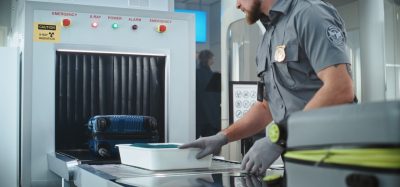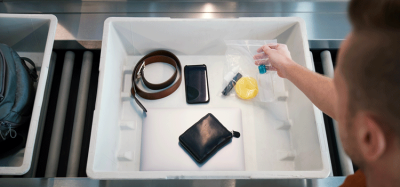Biometrics and airport access control
Posted: 17 March 2006 | Alan Medlock, Service Delivery Director, London City Airport | No comments yet
Biometrics has played an important role in efforts to strengthen airport security. Here Alan Medlock outlines how London City Airport has used Biometrics to implement a cost-effective, user-friendly and secure employee identification system.
Biometrics has played an important role in efforts to strengthen airport security. Here Alan Medlock outlines how London City Airport has used Biometrics to implement a cost-effective, user-friendly and secure employee identification system.
Following 9/11, the aviation industry faced immediate challenges in identifying and addressing new security issues to make their airports more secure. In addition to increasing the numbers of security officers by nearly 50 per cent, London City Airport focused on how to strengthen security using technology, where appropriate. A system which uses each employee’s unique finger biometric to control access to restricted areas of the airport was chosen.
Background
In two major robberies at Heathrow in 2002, security vans within the airport’s Restricted Zone (RZ) were targeted. Following these robberies, the Metropolitan Police called for a tightening of aviation security. The police’s view was that it was not possible to distinguish between non-terrorist crime and terrorism, a weakness in one security area showed a weakness in another.
Join our free webinar: Revolutionising India’s travel experience through the Digi Yatra biometric programme.
Air travel is booming, and airports worldwide need to move passengers faster and more efficiently. Join the Digi Yatra Foundation and IDEMIA to discover how this groundbreaking initiative has already enabled over 60 million seamless domestic journeys using biometric identity management.
Date: 16 Dec | Time: 09:00 GMT
rEGISTER NOW TO SECURE YOUR SPOT
Can’t attend live? No worries – register to receive the recording post-event.
A report for government, commissioned jointly by the Department for Transport (DfT) and the Home Office, was prepared by Sir John Wheeler. Its primary focus was on the role of the police at airports, in respect of aviation security and more widely in airport security. The report’s many recommendations included improvements in CCTV coverage at airports, tightening of verification procedures at points of access to the RZ and more thorough background checks before staff are issued with an RZ pass.
The Government accepted in principle all of the recommendations of Sir John Wheeler’s report
An area identified for enhancement was the verification of persons seeking to gain access to the Restricted Zone.
Identity management technology needs
In seeking to apply new technology to meet our security requirements, London City Airport identified a number of key requirements in a potential solution:
- Sufficiently mature and reliable
- Acceptable to staff, providing fast and easy access for authorised users
- User-friendly technology
- Seamless integration with existing systems
- Common platform
- Secure and robust system
- Cost efficient
- Scalability
One technology that showed promise was biometrics. A biometric is a physical or biological feature or attribute that can be measured. The strength of biometrics lies in the one-to-one relationship between a person and their unique biometric information. The use of this biometric technology would enable security staff to verify the validity of a claimed identity, answering the question “Is this person who he, or she, claims to be?”
The use of biometrics ensures that individuals can assert only their own identity. This ensures non-repudiable authentication – security staff are assured that they are authenticating the individual – not just an electronic ID card or secret password.
Biometric identification works in four stages: enrolment, storage, acquisition and matching. Individuals are enrolled by creating a record associating the identifying features with the individual. This record scan is then stored. There are two options for storage: the records can be stored in a central database, or in a decentralised way, for example using smart cards. Then, when identification is required, a new scan is performed. Finally, the newly acquired record is compared to the stored record. If they match, the individual has been identified.
The London City Airport security team spent nearly twelve months assessing the various biometric technologies available and how these technologies could be applied to meet the key objective, to strengthen airport security.
Once the team had chosen a supplier they worked very closely with them to design a system that would incorporate their Biometric Authentication Engine into the existing airport infrastructure, avoiding the very significant cost of installing entirely new equipment and cabling across a large site. The biometric authentication system introduced in 2003 now verifies the identity of all airport employees.
The chosen system operates with a range of authentication methods, including fingerprint, iris and facial recognition. This allows London City Airport to decide on the level of authentication required in order to gain access to the restricted zone.
Technology Assessment
There are many different types of biometric recording and checking systems available, some of which can be applied on a large scale and others which are more specialised. For an access control system, any chosen biometric should be widely applicable to the whole airport workforce, use technology which is proven and affordable, and – most important of all – be acceptable to the staff.
Four types of biometric information were considered for use in the access control system: fingerprints, iris patterns, facial recognition and hand geometry. All four have been used in pilot programmes at other airports.
At London City Airport, we came to the conclusion that a system based on fingerprints, which are the most widely used form of biometric recognition, would best suit our particular application. However, we also decided to choose a system which can be configured with any of the biometric technologies, as the airport may well deploy one or more of these other technologies in the future.
In selecting fingerprints as the initial biometric technology, the airport also considered the type of card to be utilised in the process. Our view was that storing the fingerprint data on the central server offered a more effective and reliable solution, utilising existing passes and much of the gate equipment, as well as providing the additional security of keeping the biometric data separate from the identity card.
Installation
The installation consists of new proximity card readers at the entry points to the Restricted Zone in the Terminal, the Vehicle Control Post, the entry to the Jet Centre and access to the airport administration building, City Aviation House. The new card readers incorporate a Biometric fingerprint reader. The Biometric reader is used to authenticate the user of the Identity (ID) pass.
Enrolment
In order to access airside, all eligible employees are required to enrol their fingerprint template onto a biometric database, held separately to the existing Security ID pass database. Prior to enrolment, each staff member is given a form outlining how the system operates, and how the data is held. Each person signs to confirm acceptance. A list of ‘Frequently Asked Questions’ is issued to all employees before they enrol.
Security Enrolment staff take four separate finger templates from each employee, to allow flexibility when access is required. This enrolment process took place during the weeks leading up to the cutover, with each organisation being allocated time slots for their staff to attend the ID unit. Enrolment took three to five minutes per person. Organisations requiring access to the Restricted Zone range from airlines and handling agent’s staff, to cleaners, maintenance technicians and retail and catering staff.
The ability to match fingerprints depends crucially on the quality of the original fingerprint taken. Enrolment staff need to be trained to ensure that fingerprints are properly scanned. Initially some problems were experienced with the quality of the enrolment data, and many of the staff enrolled at the beginning of the process have returned for rescanning. As the ID Room staff gained experience, so the quality of data recorded improved.
One of the first software modifications introduced was to provide feedback on the quality of the enrolment.
The enrolled template is valid for the period of the pass, up to three years, as over time, a user’s biometric information may change.
Operation
To date, there have been no failures of the system – we haven’t let in anyone we shouldn’t. Where members of staff have experienced problems gaining access, it has been due to poor enrolment data, or failure to present a finger properly.
To ensure that no unauthorised changes are made to the central database, electronic signatures are used to ensure data integrity. Each transaction requires the enrolling officer to confirm their own identity through the biometric scanner.
Consultation
Representatives from all airport companies and organisations were invited to meetings prior to the commencement of the enrolment process, where the biometric project was discussed in some depth.
One of the key questions raised by staff was the security of the information being captured, specifically the fingerprint. With the system installed at London City, once the fingerprint has been scanned, it is converted into a series of numbers, which are then encrypted through various layers before being recorded in the biometric database. There is no record of the fingerprint image kept on the system; the image cannot be recreated from the encrypted numbers, and cannot be seen as a picture on a screen or anywhere else.
This consultative process, involving staff, their management and their trade union representatives, resulted in 100% voluntary enrolment amongst London City employees, and staff of other companies working at the airport.
Data Protection
Access to the biometric database information is restricted to nominated personnel within the London City Security department and the London City IT department (for maintenance). The database is installed at the airport and is not accessible from any other network.
The only information stored on the biometric database is the employee’s name, ID pass number and fingerprint template. Other key personal data is stored on the Security Department master database. It is not possible to recreate the template creation process to reconstruct the original fingerprint image, or to modify the template at a later date.
London City Airport is required to ensure that the biometric database and the Security ID pass database operates in accordance with the principles set out in the UK Data Protection Act 1998. The Act distinguishes between personal data and sensitive personal data, and sets tighter conditions for processing the latter.
The Code of Practice for the system includes what the information is used for and to whom it might potentially be made available. A copy of the Code of Practice is issued to each organisation, and may be viewed by any member of staff at the ID Pass Office during normal working hours.
Our biometric system is a “closed” application, it does not exchange information with other systems or organisations. Specifically, it is not linked to police or government databases, although such linkages are possible if legislation were to change.
Future Developments
Security is a vital part of the airport’s operation and the security team continue to look at new technical enhancements to assist in preventing unauthorised access to the airport and aircraft, to ensure the safety and security of passengers and staff.
The security team intend to develop the existing identity management infrastructure to:
- Introduce biometric logon for all desktop systems in the airport
- Integrate common use platforms in the airport including check-in systems, X-ray screening machines.
The UK Department for Transport is currently monitoring trials of biometric systems at a number of airports, and has approved the installation at LCY.
Summary
What benefits has the biometric system delivered to London City Airport?
- Increased security controlling access to the Restricted Zone at the airport
- Reduced risk of identity fraud
- Enhanced user confidence in our security systems
- Enhanced control
- Eliminated the possibility of fraudulent use of lost or stolen ID cards
- Consistent security across all RZ entry points.
Stay Connected with International Airport Review — Subscribe for Free!
Get exclusive access to the latest airport and aviation industry insights from International Airport Review — tailored to your interests.
✅ Expert-Led Webinars – Gain insights from global aviation leaders
✅ Weekly News & Reports – Airport innovation, thought leadership, and industry trends
✅ Exclusive Industry Insights – Discover cutting-edge technologies shaping the future of air travel
✅ International Airport Summit – Join our flagship event to network with industry leaders and explore the latest advancements
Choose the updates that matter most to you.
Sign up now to stay informed, inspired, and connected — all for free!
Thank you for being part of our aviation community. Let’s keep shaping the future of airports together!


















